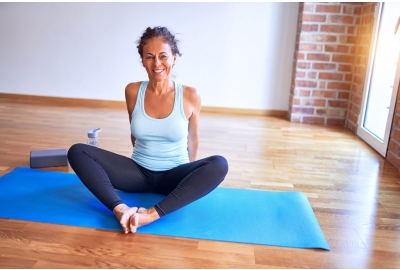
How Mula Bandha Yoga Can Help Strengthen Your Pelvic Floor

Dedicated yogis and beginners alike know that yoga brings all sorts of measurable benefits. Studies show that the practice has the power to reduce stress, anxiety, and depression while lessening pain, strengthening muscles, and treating symptoms of menopause. But did you know that yoga can also help with incontinence and pelvic pain? Indeed, it’s all part of the yogic approach to pelvic floor exercises, called mula bandha yoga.
Yoga for Pelvic Floor Strengthening: 7 Poses to Try
What Is Mula Bandha Yoga?
What is mula bandha yoga, exactly, and what does it have to do with the pelvic floor? For the answer, we turned to a few yoga experts. “Mula bandha is the Sanskrit term for a pelvic floor exercise that serves as the ‘root lock,’” says Sunil Murthy, the chief editor at TheDevotedYogi.com.
In yogic philosophy, the root chakra is located at the base of the torso. During mula bandha practice, the goal is to draw the root chakra up and inward, contracting the muscles in the same way you would with Kegels and channeling the energy associated with the root chakra. “This exercise strengthens the muscles of the pelvic floor, which supports the reproductive organs, holds the pelvic organs in place and helps with incontinence and constipation,” says Murthy.
So how do these poses differ from standard Kegels? “The main difference is that mula bandha is a more mindful exercise than Kegels,” says Murthy. “It combines the elements of health for the mind that come from meditation and yoga with the muscular benefits of doing Kegels.”
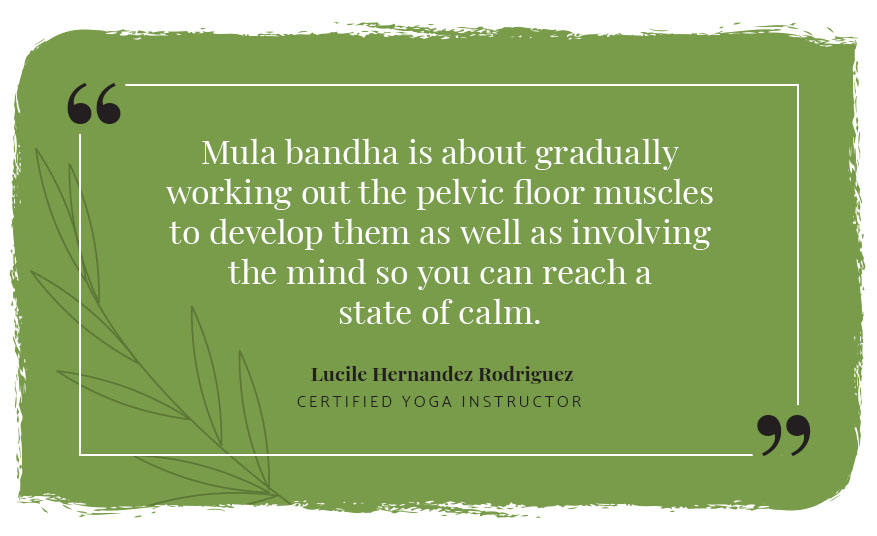
According to certified yoga instructor Lucile Hernandez Rodriguez, Kegels are meant to be performed rapidly, while mula bandha exercises are more about relaxing and taking your time. “Mula bandha is about gradually working out the pelvic floor muscles to develop them as well as involving the mind so you can reach a state of calm,” says Rodriguez.
In other words, if you’re looking for a great way to improve your quality of life both mentally and physically, a little mula bandha yoga — perhaps paired with some pelvic floor breathing — may go further than Kegels alone.
Learn How to Connect Your Pelvic Floor and Breathing
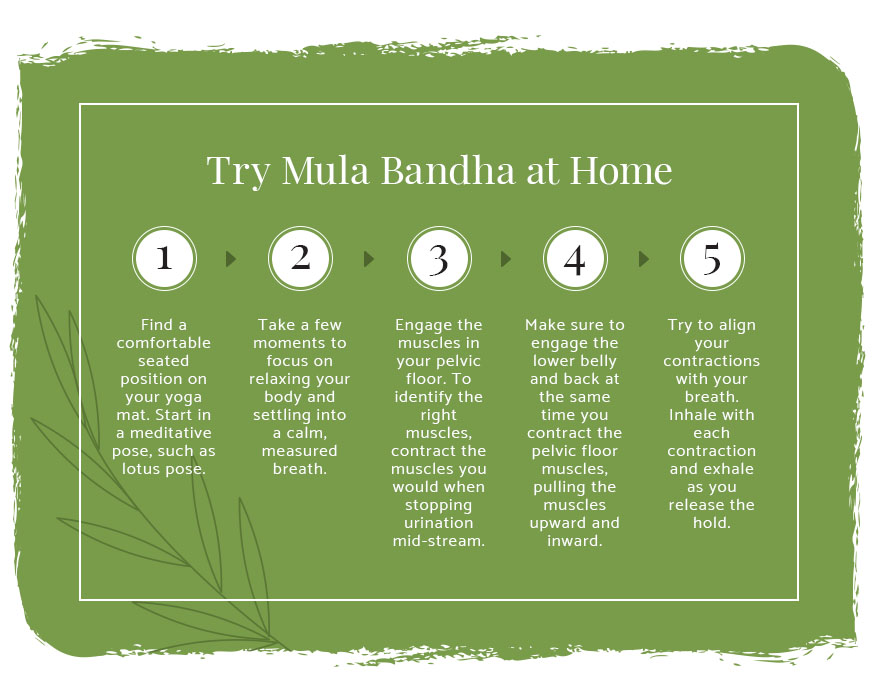
|
Try Mula Bandha at Home Find a comfortable seated position on your yoga mat. Start in a meditative pose, such as lotus pose (cross-legged and seated). Take a few moments to focus on relaxing your body and settling into a calm, measured breath. Engage the muscles in your pelvic floor. To identify the right muscles, contract the muscles you would when stopping urination mid-stream. Make sure to engage the lower belly and back at the same time you contract the pelvic floor muscles, pulling the muscles upward and inward. Try to align your contractions with your breath. Inhale with each contraction and exhale as you release the hold. |
How Mula Bandha Helps the Pelvic Floor
Mula bandha works to strengthen the pelvic floor muscles in the same way that Kegel exercises do. Just like with bicep curls or leg presses, continually contracting these muscles increases the size of muscle fibers and boosts blood flow to the area, which results in increased strength and support for your bladder, bowels, and reproductive organs. A strong pelvic floor helps prevent and treat common issues like incontinence and pelvic organ prolapse, which happen after pregnancy or as part of the normal aging process.
Prolapse After Giving Birth: Everything You Need to Know
Whether you use Kegel balls, pelvic floor yoga, or nothing at all, these subtle movements can make a big difference in supporting your body as a whole, and not just in the pelvic region. “It's important to strengthen all of the muscles in the pelvic floor because they work in tandem together,” says Murthy. “Working one muscle — like crunching the abs or clenching the pelvic floor muscle during Kegels — can work at the expense of others.”
A stronger pelvic floor can mean a stronger body as a whole, which can help you deepen your yoga practice. “Working on your pelvic floor muscles will let you trust your body more,” says Rodriguez. “This is important as you make progress in your yoga journey, especially when you’re on your way to do more advanced poses. Improved core strength and better posture are also some of the results of strengthening your pelvic floor muscles.”
It also has the added benefit of heightened sexual pleasure for women because it boosts arousal and natural lubrication.
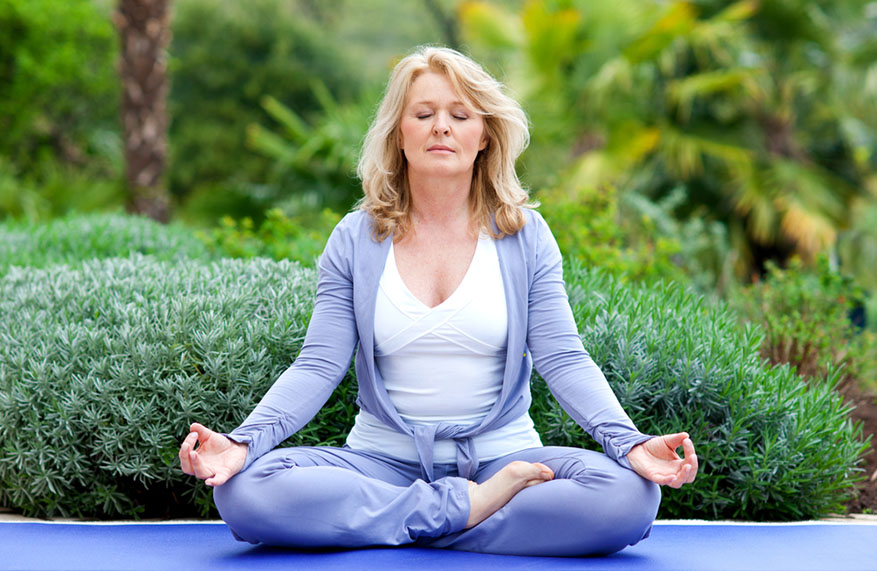
How to Do Mula Bandha Yoga
Ready to start integrating mula bandha yoga into your daily practice? Good for you! It’s important that you learn how to master it before diving in. If you’re new to yoga, be sure to read our article on yoga for the pelvic floor or how to do a pelvic tilt to learn some great beginner tips. If you’re a seasoned yogi but unsure where to start with mula bandha, it will help if you learn how to do Kegel ball exercises before you begin.
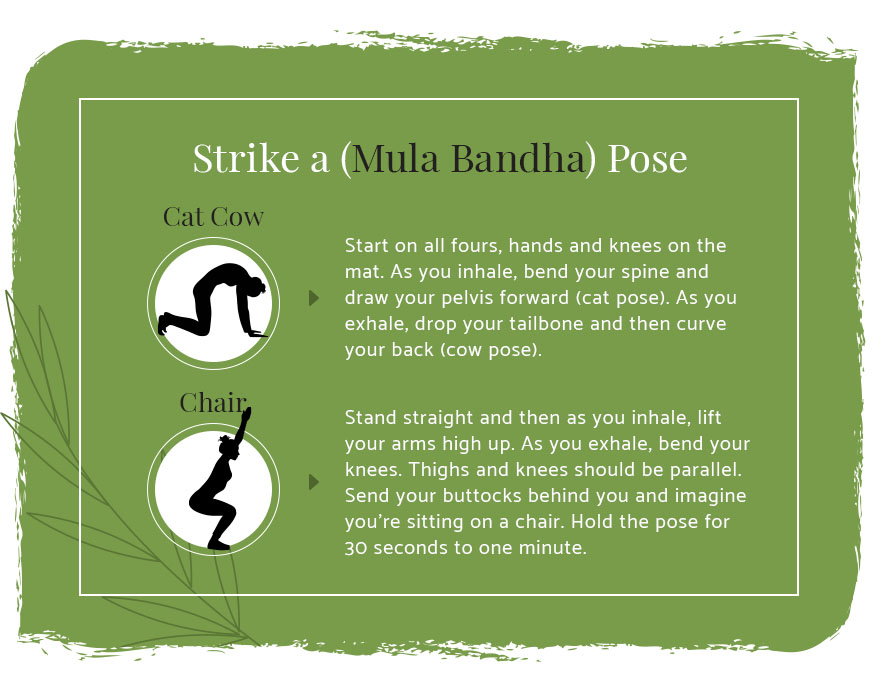
|
Strike a (Mula Bandha) Pose Cat Cow Start on all fours, hands and knees on the mat. As you inhale, bend your spine and draw your pelvis forward (cat pose). As you exhale, drop your tailbone and then curve your back (cow pose). Chair Stand straight and then as you inhale, lift your arms high up. As you exhale, bend your knees. Thighs and knees should be parallel. Send your buttocks behind you and imagine you’re sitting on a chair. Hold the pose for 30 seconds to one minute. |
Regardless of if you’re brand-new to yoga and Kegels or are comfortable with both, the experts emphasize the importance of starting slow and focusing on mindful breathing. “I think the most important part for beginners is getting into it slowly, but steadily,” says Murthy. “The muscles you're working with are usually not something you have actively worked on before, so there's a learning curve that can't be sped up. Mindful breathing is crucial.”
Knowing the Importance of Pelvic Floor Health
Mula bandha yoga is a rewarding tool for women of all ages who want to strengthen their pelvic floor muscles and reap some of the benefits of yoga and mindfulness at the same time. Too often, we overlook and take for granted these unseen muscles, but keeping them in shape is crucial to happiness as we move through the journey of pregnancy, menopause, and aging. Sofia & Grace is always here to help support you every step — and every deep breath — of the way.
Add Kegel Products to Your Yoga Routine Today
Image Credits
Krakenimages.com/Shutterstock.com
Dean Bertoncelj/Shutterstock.com/Shutterstock.com
Babkina Svetlana/Shutterstock.com